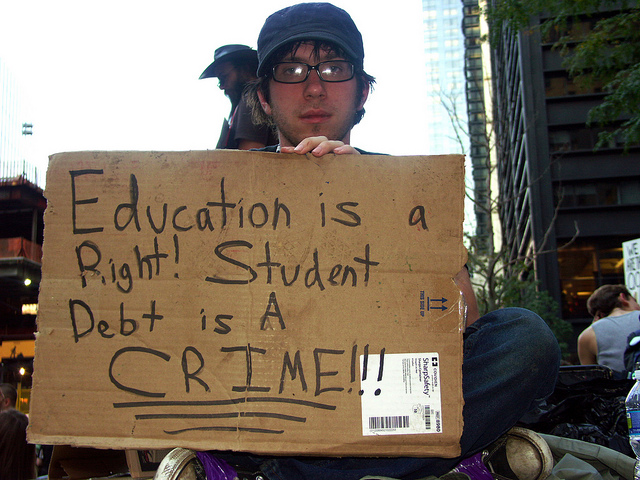
With the cost of tuition rising at many public universities and a scarcity of aid from federal and state agencies alike, it is difficult to obtain a college education without incurring a mountain of debt in the United States. Wisconsin Public Radio talked with sociologist Sara Goldrick-Rab about her research on student debt and the ways it hinders students from completing their degrees.
Despite receiving Pell grants or other forms of federal aid, half of the 3,000 students in Goldrick-Rab’s study had dropped out within six years, and only twenty percent had completed their degrees in five years. She argues that attrition occurs because these forms of aid do not cover the large majority of costs for either two-year and four-year institutions. Specifically, state sources of funding do not hold up their end of the deal, which leads to tuition hikes at many state schools. As a result, many students are forced to decide between basic necessities and continuing their education. As Goldrick-Rab notes:
“The cost of living in this country is substantial and some college students are going without their basic needs met. It is very clear that hunger and homelessness are not strangers to undergraduates now, and that’s pretty devastating.”
Goldrick-Rab suggests that a possible solution is to make two-year associate’s degrees free. That way “you know what you’re getting from it, before you get involved in the risk involved of using debt to finance it.” Higher education is foundational to the future of the United States, so we must start investing more in students instead of making them choose between their next meal and earning a college degree.

Comments